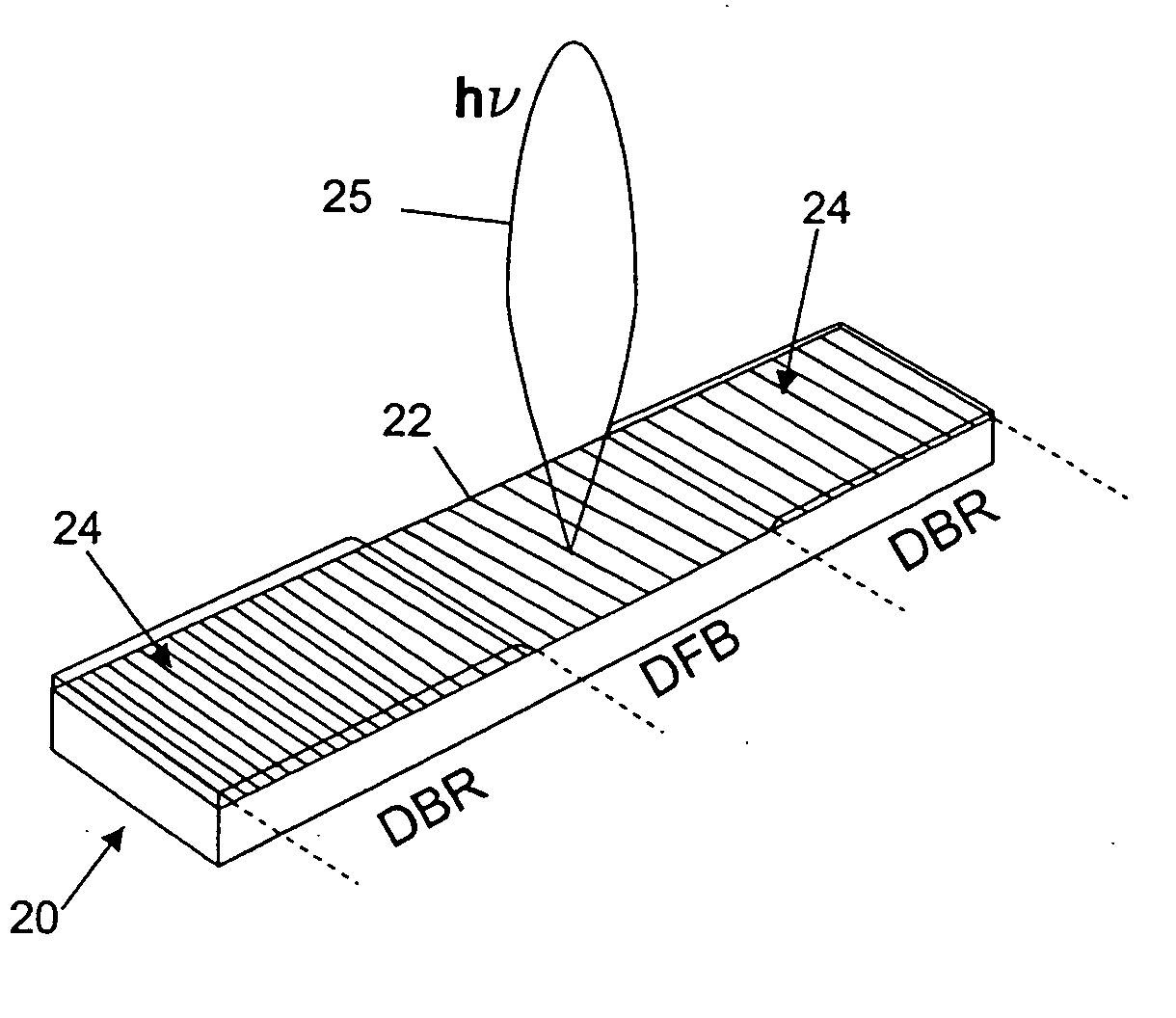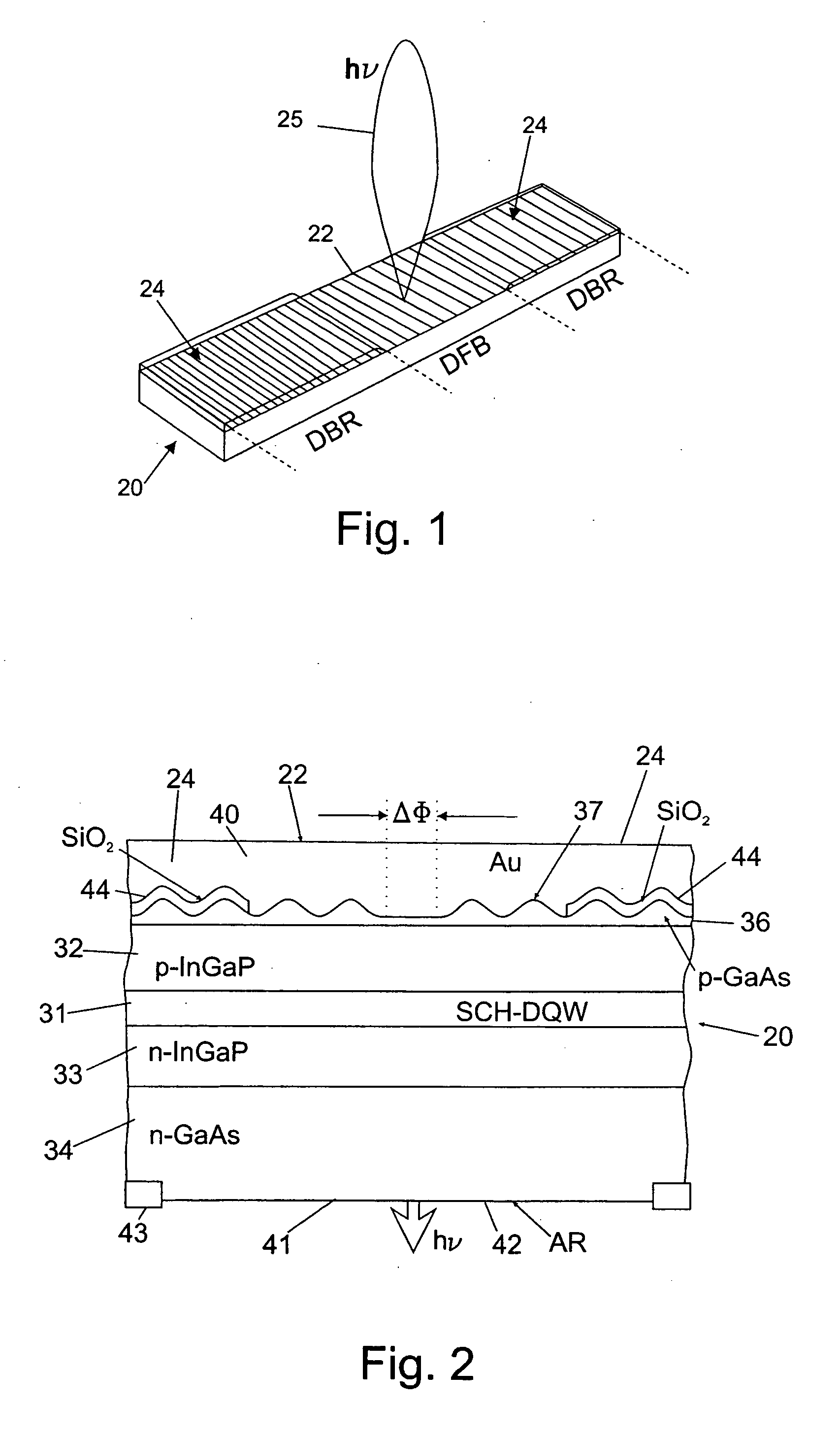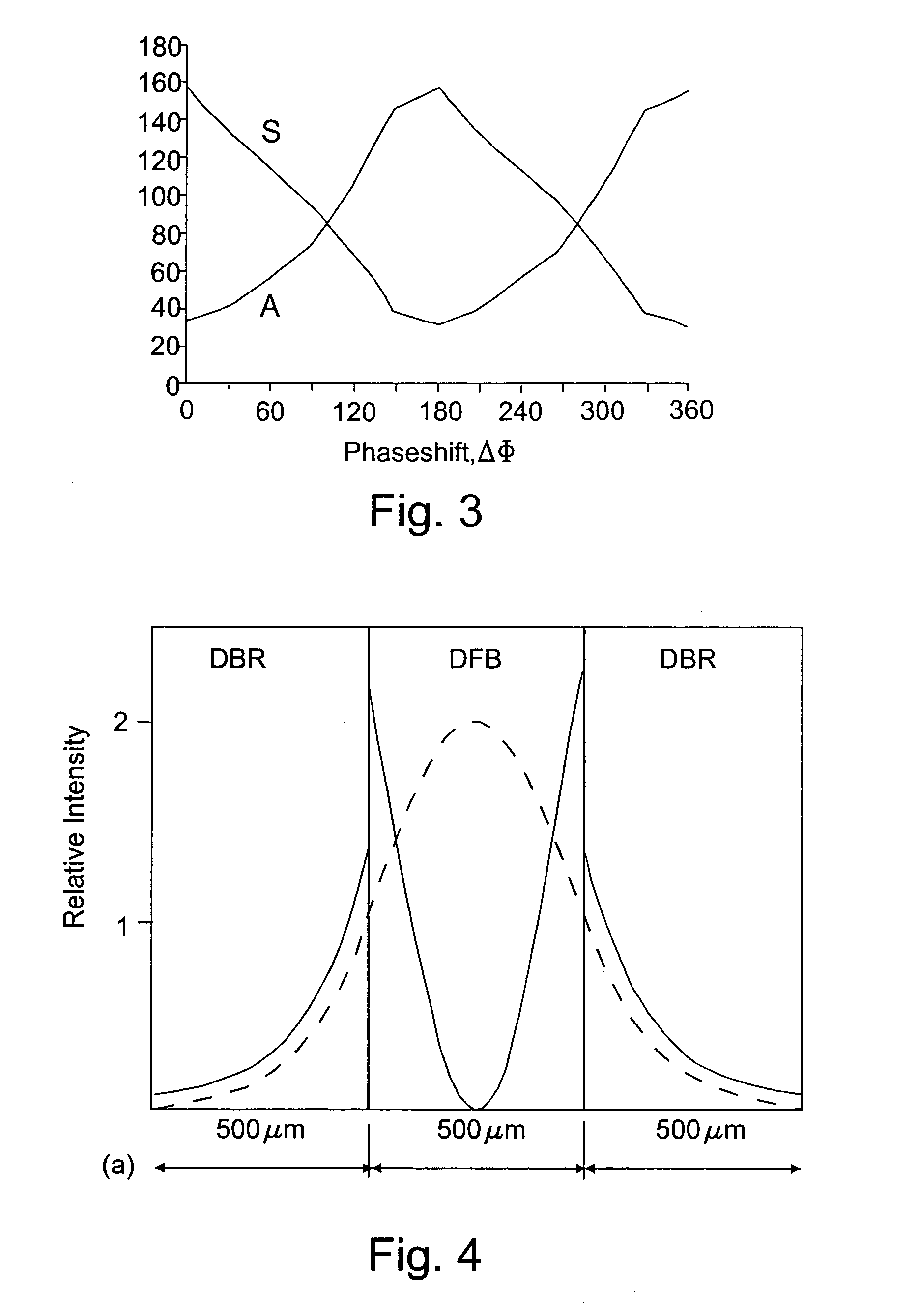High coherent power, two-dimensional surface-emitting semiconductor diode array laser
a semiconductor diode array, two-dimensional technology, applied in the direction of semiconductor laser structure details, semiconductor lasers, optical resonator shape and construction, etc., can solve the problems of high radiation loss, and low yield of in-phase-mode operating devices, so as to improve the sensitivity of laser-absorption spectroscopy, the effect of high efficiency
- Summary
- Abstract
- Description
- Claims
- Application Information
AI Technical Summary
Benefits of technology
Problems solved by technology
Method used
Image
Examples
Embodiment Construction
[0045] For purposes of illustrating the invention, a single surface-emitting DFB / DBR device element that may be utilized in the laser diode array of the invention is shown generally at 20 in FIG. 1. This type of device includes a distributed feedback (DFB) grating structure 22 bounded longitudinally by two distributed Bragg reflectors (DBRs) 24. Operation in a single orthonormal beam (illustrated at 25) can be attained utilizing at or near a half-wave (7c) central grating phase shift in the DFB grating 22. A particular embodiment of a semiconductor laser structure of this type is shown for exemplification in FIG. 2, although it is understood that other devices of this type may also be utilized, as described, for example, in published International Application WO 01 / 13480 and U.S. Pat. No. 6,810,053. As discussed further below, single beam operation can also be obtained utilizing a grating with a distributed phase shift or a π-phase shift film on the output surface of a device whose ...
PUM
 Login to View More
Login to View More Abstract
Description
Claims
Application Information
 Login to View More
Login to View More - R&D
- Intellectual Property
- Life Sciences
- Materials
- Tech Scout
- Unparalleled Data Quality
- Higher Quality Content
- 60% Fewer Hallucinations
Browse by: Latest US Patents, China's latest patents, Technical Efficacy Thesaurus, Application Domain, Technology Topic, Popular Technical Reports.
© 2025 PatSnap. All rights reserved.Legal|Privacy policy|Modern Slavery Act Transparency Statement|Sitemap|About US| Contact US: help@patsnap.com



